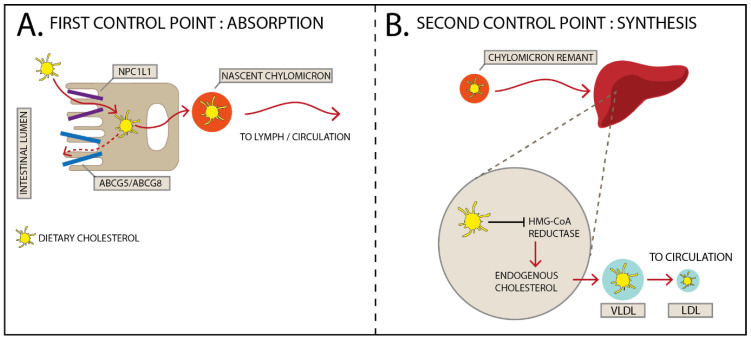Figure 1.
Mechanisms of how dietary cholesterol affects cholesterol metabolism. (A) Dietary cholesterol enters the enterocyte via NPC1L1 after being released from the micelle. However, some cholesterol is effluxed back to the intestinal lumen via ABCG5 and ABCG8 transporters explaining why only a percentage of the cholesterol consumed in the diet reaches the bloodstream. The remaining cholesterol gets packed into nascent chylomicrons, which enter the lymph and then the systemic circulation. (B) After losing most of its triglycerides, the cholesterol-loaded chylomicron remnant is removed by the liver. In the liver, free cholesterol inhibits HMG-CoA reductase, the rate limiting enzyme for endogenous cholesterol synthesis, Thus, if more cholesterol is consumed, less will be synthesized by the hepatocytes. VLDL: very-low-density lipoprotein; LDL: low-density lipoprotein; NPC1L1: Polytopic Niemann-Pick C1-like 1; ABCG5/ABCG8: ATP-binding cassette transporters G5/G8; HMG-CoA: 3-hydroxy-3-methyl glutaryl coenzyme A.

